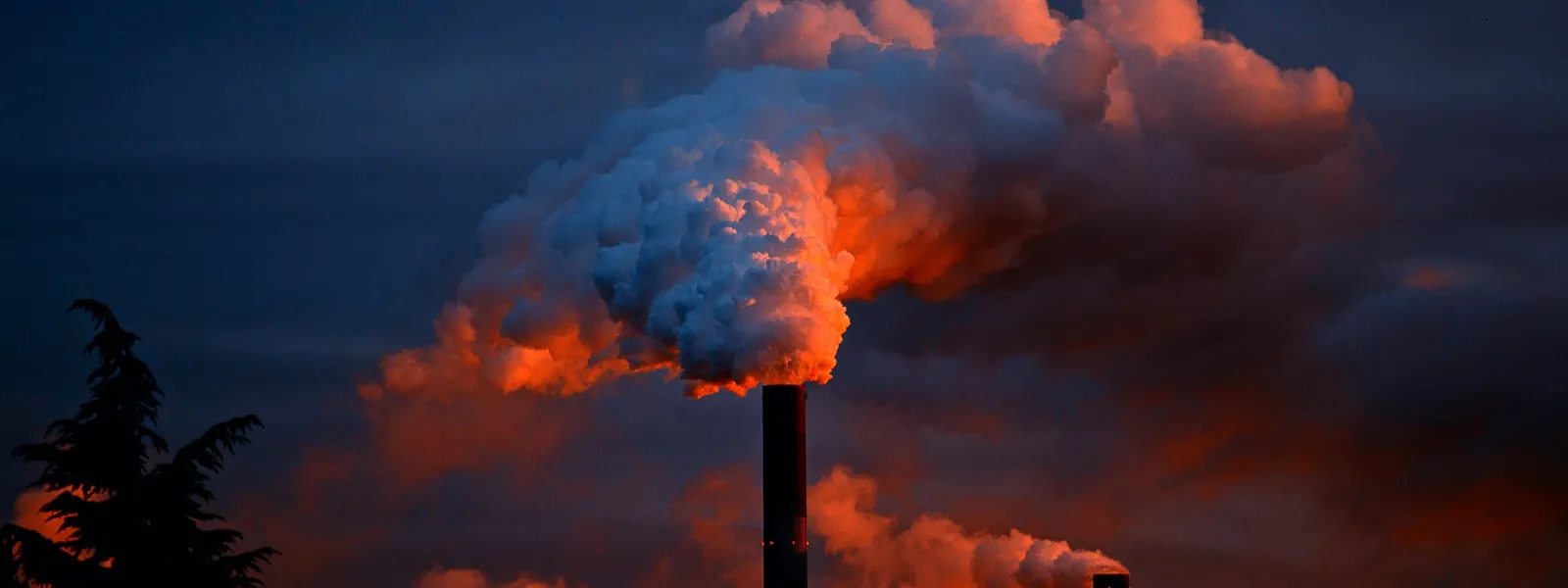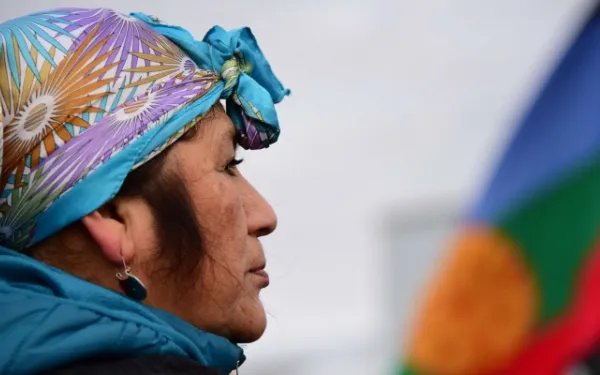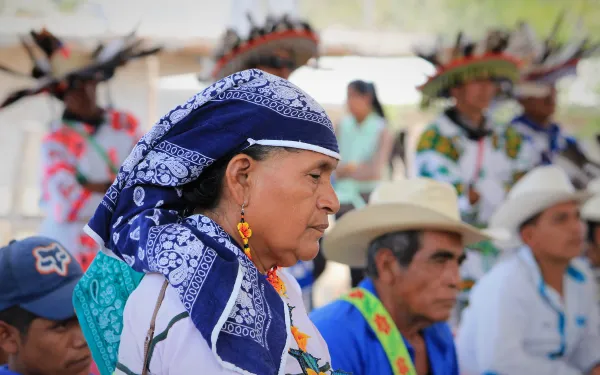
Project
Combating Short-Lived Climate Pollutants (SLCPs)
You encounter them every day: soot from auto exhaust and burning wood (black carbon), gases that make refrigerators and air conditioners cool (hydrofluorocarbons), natural gas that makes your stove work (methane), and ground-level ozone formed by sunlight and fossil-fuel emissions. Short-live climate pollutants are all around us. And controlling them holds great potential in the fight against climate change.
Short-lived climate pollutants (SLCPs) are so named because they last a relatively short time in the atmosphere, from a few days to a few decades. In contrast, carbon dioxide (CO2) can last centuries. Yet they’re a major contributor to climate change, degrade air quality, and have grave impacts on food security and the health of the world’s most vulnerable populations.
According to the Intergovernmental Panel on Climate Change, SLCPs are responsible for more than 30 percent of global warming (more recent studies estimate their contribute to be as high as 45 percent).
Effective control of SLCPs could create significant progress in the near-term fight against climate change, buying time to implement long-term solutions. It could also mean better air quality, a reduction in premature deaths from respiratory and heart disease, and improved crop yields.
Related projects

Defending communities from fracking’s advance in Argentina
In a country highly dependent on hydrocarbons, human rights and those of nature are often overlooked. That's why in Argentina, AIDA and our allies are supporting the efforts of communities and organizations to avoid the damages caused by fracking.In Neuquén province in Argentine Patagonia, a large metal structure rises high above the apple trees. It’s one of many fracking wells that have been installed in this rich natural area. A single well like this one requires roughly 11 million liters of water for operation, the equivalent to 18 years of water consumption for an average family. Despite being internationally recognized as an experimental, risky and contaminating process, fracking is spreading rapidly through Argentina, affecting the land and water of the Mapuche people and other local communities. Much of the nation’s exploration is taking place at Vaca Muerta, the largest unconventional gas reserve in Latin America. Roughly 30 thousand square kilometers, the site covers four Argentine provinces: Neuquén, Rio Negro, La Pampa and Mendoza. The expansion of fracking has brought with it problems like pollution and great harm to the livelihoods of local communities, including the Mapuche, who are forced to find new ways of living on their land in order to avoid migration to urban centers. Oil companies generate unstable and short-term employment. And, due to the increase in the price of land, the residents of the area must earn more money to maintain their standard of living. In a country that gets 90 percent of its energy from hydrocarbons, the government has failed to prioritize the rights of indigenous peoples, of children and of nature. Instead, it has favored the economic income of a highly unsustainable activity. That’s why the efforts of communities and civil society organizations to resist the blind advance of fracking are fundamental. “What motivates me is caring for our land and water; nature is not ours, we belong to it,” stated Santiago Cane, member of the Environment and Natural Resources Foundation (FARN), an organization that is using the courts to stop fracking. FARN filed a writ of amparo to invalidate the authorizations granted for the exploitation of four fracking wells in Mendoza. The environmental authority granted the permits in July 2017, in a record time of six days, without requiring an Environmental Impact Assessment. The lawsuit, which AIDA is supporting from our experience in international environmental law, remains in process. “In Mendoza, fracking is advancing at a rapid pace,” Santiago explained. “The national and provincial governments are not taking into account the potentially irreversible pollution of water sources that serve several cities.” In fact, Mendoza is a province that has suffered from water scarcity for years, a problem aggravated by climate change. Those who promote fracking in Mendoza also overlook the fact that, by contaminating both surface and ground water supplies, the toxic chemicals used in fracking will likely reach the Llancanelo lagoon, a wetland of international importance located in the foothills of the Andes Mountains. The lagoon is a mandatory passage and rest area for more than 130 species of resident and migratory birds. Additionally, the region is home to the Mapuche people. According to international law, indigenous peoples like the Mapuche must give their free, prior and informed consent to any activity that affects their territory. That right is not being respected in this case. “I am motivated by the idea of a different economy that does not deprecate nature and that does not generate the accumulation of wealth within small groups of society,” Santiago adds. FARN, together with AIDA, is part of the Latin American Alliance on Fracking, a coalition of organizations that work to slow fracking’s advance in the region. Together we will continue our work to avoid fracking’s damages to our land and water. We are convinced that the power to stop fracking lies with the people.
Read more
The shortsighted expansion of the Port of Veracruz
The powers behind the Port of Veracruz expansion project share a trait all too common in Mexico: a vision of development as the sum of short-term gains. But achieving those often requires squashing all possible obstacles, including our natural environments and the laws that protect them. “The first stage of the expansion of the Port of Veracruz will provide oxygen to the surrounding area for 15 or 20 years,” stated Juan Ignacio Fernández Carbajal, director of the Veracruz Port Authority. By oxygen, the director means economic income and new sources of employment derived from the port’s increased capacity. But this vision of development—so clearly shortsighted— ignores the social, environmental and economic benefits that the Veracruz Reef System has long provided, and which it will continue to provide for far more than 20 years. The second most important infrastructure project in Mexico’s recent history will irreversibly damage the largest coral ecosystem in the Gulf of Mexico, the Veracruz Reef System National Park. The reefs of Veracruz provide oxygen to Mexico and our planet in the most literal sense. The oceans and their ecosystems, particularly coral reefs, generate about half the oxygen we breathe and absorb almost a third of the carbon dioxide we emit. Coral reefs also produce 17 percent of all proteins consumed worldwide—a percentage that rises to 70 percent for coastal nations, according to a report by the United Nations Food and Agriculture Organization. They harbor more than 100 thousand different species of marine fauna, including thousands of commercial fish, which share their home with herbivorous fish, sea turtles and sharks. In good conditions, reefs protect coastal populations from storms, hurricanes and tsunamis—natural phenomena aggravated by climate change. They absorb up to 95 percent of the impact of waves generated by strong winds. The people of Veracruz know particularly well how the reefs have protected them. When hurricane Karl (a category four) hit the city in 2001, the Veracruz reefs provided a buffer that protected the city from the worst of the storm. Despite the fact that the reef system was designated a national protected area in 1975, and named a national park in 1992, the government decided to change the park’s boundaries in 2012 to allow for the expansion of the Port of Veracruz—effectively excluding the Punta Gorda reefs and Vergara Bay from the protected area. In purely economic terms—those clearly prioritized by the project’s promoters—by taking away the protection of those reefs, and putting their future at risk, Mexico’s oceans are losing value. The value of the environmental services provided by the now-unprotected Punta Gorda and Vergara Bay reefs is estimated around $290.5 million USD, a dramatic figure in light of the estimated value of the expanded port's activities. The port expansion project has an estimated value of $85,600 USD per square kilometer, according to an article by the University of Veracruz, a figure that pales in comparison to the estimated value of ecosystem services provided by coral reefs, which ranges between $100,000 and $600,000 USD dollars per square kilometer, according to the United Nations Environment Program. The obligations Mexico ignored to promote the port “Unfortunately, when we thought the project was about to begin, we began to have environmental problems, which delayed the project for about three and a half years,” Fernández Carbajal explained. The “problems” to which the director is referring is the existence of protected coral reefs on site. “Since the problem was a national park, the government figured they’d remove it from the area so they could build the port without facing any legal obstacles,” Leonardo Ortiz, a researcher at the University of Veracruz, explained in our documentary short Battle for the Reefs of Veracruz. According to national law, the only activities permitted within the Veracruz Reef System National Park are those related to the protection of its natural resources, the increase in flora and fauna, and the preservation of its ecosystems and their elements. Port activities are clearly in violation of this law. So rather than stop the expansion project, the government chose instead to change the park’s boundaries, effectively unprotecting the reefs that fell within the port’s proposed limits. In doing so, the government failed to conserve the natural characteristics of the nation’s ecosystems for future generations. It also violated its obligations under the Ramsar Convention, an intergovernmental treaty for the protection of wetlands, under which the Veracruz Reef System is recognized as a Wetland of International Importance. What’s more, the project’s Environmental Impact Assessment was highly flawed in the following ways: The Port Authority requested a fragmented authorization of the project, which prevented an adequate and comprehensive assessment of the project’s cumulative impacts over time. By ignoring the existence of the once-protected reef located in the construction zone, the assessment failed to provide the best possible scientific data. It did not include protective measures for sea turtles that spend an important part of their life cycle in the park—particularly hawksbill turtles, a threatened species recognized by the Inter-American Convention for the Protection and Conservation of Sea Turtles. It failed to consider the impacts on the reef due to sedimentation, the dredging of the Bay of Vergara and Punta Gorda, and the increase in the quantity and size of the vessels in the new port. It ignored the fact that, by transporting an increased quantity of hydrocarbons, the port’s expansion increases the risk of spills in a region highly vulnerable to these incidents, which could seriously damage the highly biodiverse reef system in the Southeast corridor of the Gulf of Mexico. For all of the above reasons, residents of the city of Veracruz have filed a writ of amparo, denouncing the government’s blatant violations of human rights and environmental law. In the legal action—presented by the Mexico Center for Environmental Law (CEMDA) and supported by AIDA—residents attest that the port expansion project is violating their human right to a healthy environment. The question we must consider then, is this: Does the short-term economic advancement of a region matter more than the preservation of a 10,000-year-old reef system that guarantees biodiversity, sustainable tourism, food security, and enduring protection against climate change? For those of us who think of the long game, and consider the natural world to be our best ally on the path toward a sustainable future, the answer is clear. The port expansion must be stopped.
Read more
Supporting Mexico’s indigenous communities in their fight against Las Cruces Dam
AIDA filed an amicus brief demonstrating the international environmental and human rights obligations the Mexican government violated by authorizing the controversial hydroelectric project. It was written in support of a lawsuit filed by the Wixárika people of Nayarit, Mexico, whose land and sacred sites would be affected by the dam. Nayarit, Mexico. The Inter-American Association for Environmental Defense (AIDA) presented an amicus brief before the First District Court of Nayarit, demonstrating the international environmental and human rights obligations the Mexican government violated by authorizing the Las Cruces hydroelectric project. The brief supports the writ of amparo filed against the project by members of the Wixárika indigenous community. "When analyzing the project, Mexican authorities failed to adequately consult affected communities and obtain their free, prior, and informed consent. Above all, they failed to respect their rights to self-determination, autonomy, territory and cultural identity, and to a healthy environment," explained AIDA attorney Camilo Thompson. "In addition, authorities overlooked the risks of damage to the San Pedro Mezquital river basin and the ecosystem it feeds: the mangrove forests of Marismas Nacionales, an internationally protected site." The hydroelectric plant, promoted by the Federal Electricity Commission, threatens ceremonial sites on which the spiritual life of the Wixárika, Náyeris-Cora, Tepehuano and Mexicanero people depend. Members of the Wixárika tribe presented the demand for protection (amparo) in mid-2017 against the authorities that endorsed the project—the Ministry of Environment and Natural Resources and the National Water Commission. AIDA’s supporting brief, presented in March, details the international obligations Mexico breached by approving the dam—those contained in the American Convention on Human Rights, the Protocol of San Salvador, Convention 169 of the International Labor Organization on indigenous and tribal peoples in independent countries, the Convention on Biological Diversity, the Ramsar Convention on Wetlands of International Importance, and the United Nations Framework Convention on Climate Change. After the request for protection was filed, the court ordered the suspension of project permits until the legal process has concluded and a decision has been made as to whether those permits are valid. Government authorities have argued that the project must continue because it is in the public interest, and that indigenous peoples can "re-organize their spiritual life in a context modified by the project’s construction." This position ignores the rights of communities, due process, and the environmental threats affecting the public interest. In order to safeguard the rights of affected communities, the court must now continue the legal process, confirm the project’s suspension, and issue the cancellation of all related permits. “The government must maintain the balance between the protection of human rights and the environment, thereby canceling the permits granted to the Las Cruces project and protecting the rights of the affected communities," Thompson said. "In this instance, Mexico has the opportunity to strengthen the global trend towards truly sustainable energy, moving away from large dam projects that emit greenhouse gases and aggravate climate change." Learn more about the case here. Press contact: Camilo Thompson, AIDA attorney, +521 9671302346, [email protected]
Read more